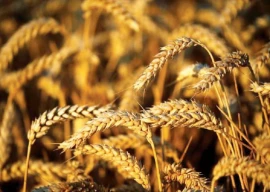
With subdued textile exports in the recent months, credit off-take by textile-related businesses has remained almost flat in the past one year.
According to the latest data released by the State Bank of Pakistan (SBP), outstanding loans extended to textile businesses in the 12 months ending on October 31 amounted to Rs563.4 billion. This was only 2.6% higher than the corresponding figure recorded at the end of October 2013.
In fact, the stock of outstanding loans by textile businesses at the end of October was even smaller than what it was in October 2008 (Rs577.2 billion).

Credit off-take is an indicator of economic growth and shows if investors have confidence in the economy’s future prospects. Increased borrowings by private-sector businesses help the country’s gross domestic product expand, as they use bank loans to meet their working capital needs and make long-term investments.
The relatively small increase in the outstanding credit position over the last one year is in spite of the fact that Pakistan now enjoys better access to the European market under the Generalised System of Preferences (GSP)-Plus scheme.
As opposed to relatively small, value-added segments, businesses involved in spinning, weaving and finishing of textiles form the bulk of Pakistan’s textile sector. Outstanding loans of businesses dealing in spinning, weaving and finishing at the end of October amounted to Rs435 billion. This was only 3.2% higher than the corresponding figure from the same month of 2013.

Out of value-added categories of textiles, the increase in the outstanding loans of businesses dealing in readymade garments was relatively higher at 4%. Similarly, the year-on-year increase in the loans taken out by businesses dealing in made-up textile articles was 9.1% while the rise in the knitwear category clocked up at 24%.
The country’s textile sector has so far failed to increase its exports despite the grant of the GSP Plus status, which allows Pakistani textile products duty-free access into the European market.
On a year-on-year basis, Pakistan’s exports decreased 1% to $4.6 billion in July-October. Analysts attribute the decrease in Pakistan’s exports to the declining Chinese demand for yarn and other lower value-added exports.
According to BMA Capital research analyst Jehanzaib Zafar, China rolled back its cotton procurement programme that created a supply glut in the global market. Resultantly, international prices of the commodity declined 2% on a month-on-month basis and 33% on a year-on-year basis in November.
Zafar said bearish sentiments prevailed in the local cotton market, as prices declined 24% to Rs5,200 per maund from Rs6,800 per maund during the last cotton season.
However, analysts seem optimistic about investment prospects in textile stocks going forward because of low cotton prices and export incentives offered by European countries. “We expect the textile industry, especially the value-adding segment, to enjoy a better year,” Zafar added, noting that the upcoming textile policy announcement will also provide the industry with another impetus.
Published in The Express Tribune, November 25th, 2014.
Like Business on Facebook, follow @TribuneBiz on Twitter to stay informed and join in the conversation.
COMMENTS (1)
Comments are moderated and generally will be posted if they are on-topic and not abusive.
For more information, please see our Comments FAQ























1714024018-0/ModiLara-(1)1714024018-0-270x192.webp)




















Blaming China won't sort out the problem. China instead is one one factor. The textile sector has been clamoring for smooth power and gas supply, but concerned ministries did not heed to their reservations. Consequently investors' confidence has been virtually zero.